A country's monuments tell its stories. A $500M donation could help diversify US history.
- Oops!Something went wrong.Please try again later.
In Chicago and in Tallahatchie, Mississippi, a national monument honoring Emmett Till and Mamie Till-Mobley is becoming reality, honoring the life and legacy of the 14-year-old Chicago youngster whose 1955 lynching and mutilation, and his mother’s subsequent insistence on an open-casket funeral, helped spark the American Civil Rights Movement.
At a park in Memphis, so too is A Monument to Listening, an installation honoring the heroism of Tom Lee, a 39-year-old Black laborer who pulled 32 people from the Mississippi River after a steamboat capsized in 1925.
And in Washington, D.C., the Bureau of Indian Affairs will begin collecting oral histories from Indigenous survivors of the Federal Indian boarding school system as part of its Federal Indian Boarding School initiative to memorialize the era and the government’s role in creating that system.
All three efforts are underway with the help of the Monuments Project, a $500 million funding initiative by the Andrew W. Mellon Foundation that aims to change the narrative told by America’s national monuments.
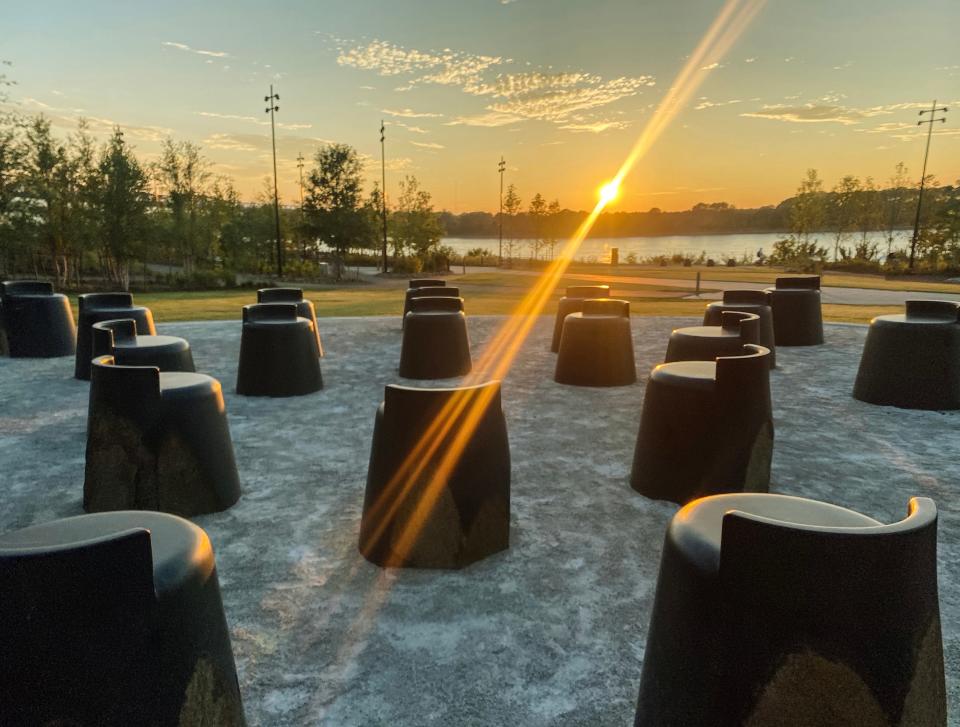
“We think of this project as being a way that we can really start to see represented in public spaces a range of the amazing, varied stories that make up the United States,” said foundation president Elizabeth Alexander.
'Monuments signal what's important'
Monuments and memorials, the project website notes, are how a country tells and teaches its story − a point echoed by history professor Gregory Downs of the University of California, Davis.
“Monuments signal what’s important and what’s memorable,” said Downs, who, while not affiliated with the project, was among several historians who urged President Barack Obama to designate several sites in Beaufort County, South Carolina, a national monument to the Reconstruction Era. “Out of an unbelievably vast and complex past, they pluck out things about which to say, 'This is important and what’s meaningful.'”
According to the Monuments Project, the U.S. commemorative landscape “disproportionately celebrates a limited few and overlooks the multitudes who have made and shaped our society, limiting our understanding of our collective history.”
The project hopes to transform that landscape by supporting “efforts to express, elevate and preserve the stories of those who have often been denied historical recognition.”
Foundation doubles down on commitment to untold stories
The foundation launched the project in 2020 as a $250 million initiative and recently doubled its commitment to $500 million. Grants finance public initiatives highlighting largely untold stories, whether through permanent installations, cultural programming or efforts such as preservation of archival materials and historical sites.
In Los Angeles, Mellon funding will help the Los Angeles County Museum of Art develop augmented-reality monuments and murals celebrating regional diversity, using technology to reflect the perspectives of local communities. In Newark, New Jersey, it will aid the Newark Arts Council’s commission and construction of a monument honoring the legacy of Harriet Tubman and the city’s role in the Underground Railroad.
Alexander, the foundation president, said the project funds initiatives in communities that have conducted discussion and soul-searching about what and who should be held important.
At the National Cathedral in Washington, the cathedral community considered whether stained-glass windows depicting confederate leaders Robert E. Lee and Stonewall Jackson, completed in the 1950s, had a place in a house of worship. Ultimately, it decided to replace those windows with others reflecting racial justice, an effort the Mellon Foundation is backing.
“That’s an example of the hard community work that has to happen that enables us to say we are happy to provide resources,” Alexander said.
Helping communities tell their own stories
The project has provided $170 million to 80 projects nationwide. Other projects funded by the foundation include:
In Juneau, Alaska, the Totem Pole Trail, a series of 10 totem poles created by Native artists in Southeast Alaska that will convey the history of the area’s Indigenous peoples along the city’s 2-mile public waterfront.
In Lawrence, Kansas, efforts by the University of Kansas to safely relocate the Sacred Red Rock, a 25-ton stone of spiritual and cultural significance to the Kanza people of the Kaw Nation, in addition to preparing the site for its placement and accompanying programming to celebrate its return.
In Los Angeles, a University of Southern California project to create the Irei Names Monument, a special book listing those of Japanese ancestry incarcerated by the U.S. government during World War II, as well as an interactive website and light installations at former national incarceration sites.
Mellon’s investment in promoting these commemorations comes as efforts to ban books and curricula focused on marginalized communities bubble throughout the country’s schools and library systems.
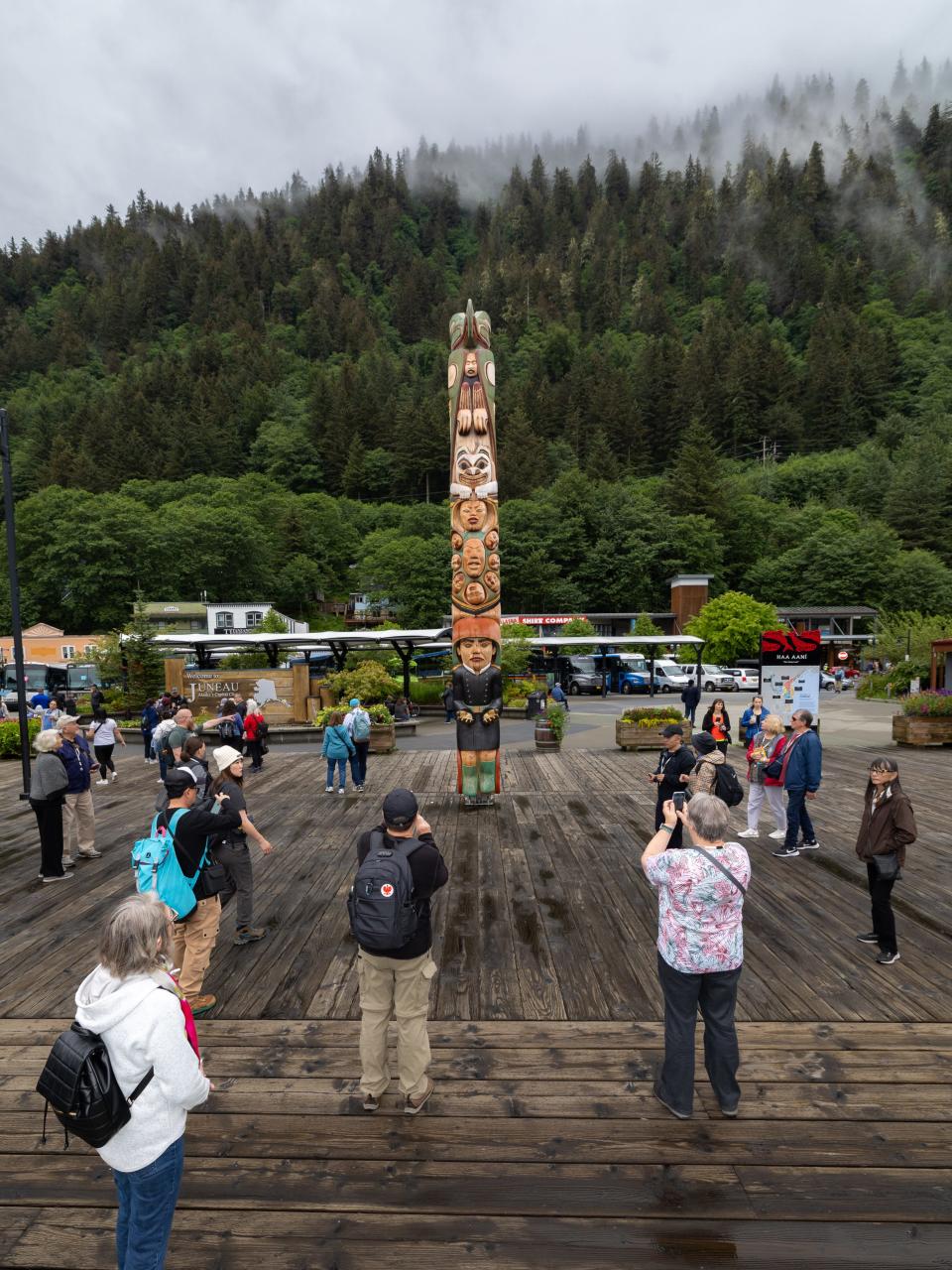
“Our lack of full acknowledgment or accounting for the harms of our past merges into our present travails,” wrote the authors of an audit of U.S. monuments produced by Philadelphia-based Monument Lab in partnership with the Mellon Foundation. “Monuments serve as places to harness public memory and acknowledge collective forgetfulness as twin forces holding up this nation.”
Women more represented as mermaids than as real people
The 2021 Monument Lab audit found that the vast majority of U.S. monuments venerate white males, and a third of them commemorate acts of war or conquest. Researchers scoured through nearly half a million records of historic properties, producing a final study set of more than 48,000 monuments and listing the 50 people honored most frequently.
The “Top 50” list included 11 U.S. presidents and 12 U.S. generals; half the list represented people who had enslaved other people. Only five among the 50 were Black or Indigenous, and only three were women: Joan of Arc, Harriet Tubman and Sacagawea.
“We found that what existed bore little reflection of what the country is made up of,” Alexander said. “Women were represented more often as mermaids and fictional figures than as people who were actors in our history and important contributors to our future.”
The top six, in order, were Abraham Lincoln, George Washington, Christopher Columbus, the Rev. Martin Luther King Jr., St. Francis of Assisi and Robert E. Lee.
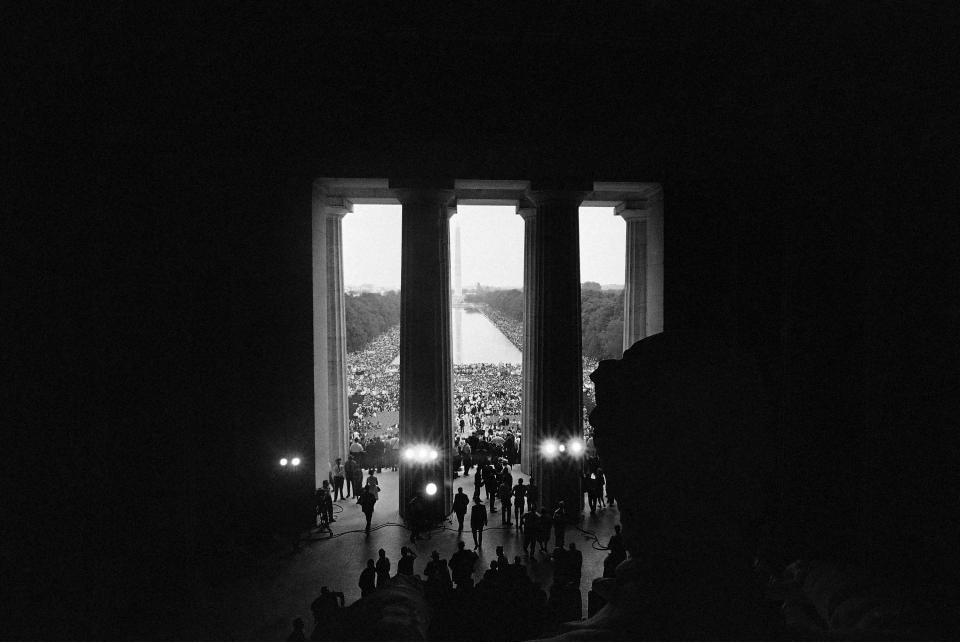
Sierra Rooney, an assistant professor of art history at the University of Wisconsin, La Crosse who is not affiliated with the Monuments Project, said the origins of Western monuments can’t be separated from the history of war and conquest.
The structures traditionally considered monuments – militarized, masculine figures sculpted in bronze or marble atop a pedestal – are historically rooted in authoritarian practices of Roman emperors, she said. Those rulers and, more recently, Napoleon, commissioned statues to celebrate their military achievements as part of their imperialist agendas.
“That legacy is everywhere in the American landscape,” Rooney said. “These monuments don’t typically grapple with the real-world effects of those conflicts, the devastating loss of military and civilian life, the environmental impact or the long aftermath and recovery from war.”
Public reckoning over monuments
The nation's global reckoning over public monuments, heightened by the Black Lives Matter movement, the 2020 murder of George Floyd and the 2015 mass shooting at a church in Charleston, South Carolina, prompted communities to reconsider those that represented oppression, racism, colonialism and injustice. Some communities – as in Charleston or New Orleans – took action to remove them; other monuments were vandalized or torn down.
“This was a major tipping point for the public’s relationship to its monuments,” Rooney said. “It began a widespread rejection of what the ‘hero on a pedestal’ represents. ... New monumentation is questioning not only who or what is being commemorated but how such commemorations happen.”
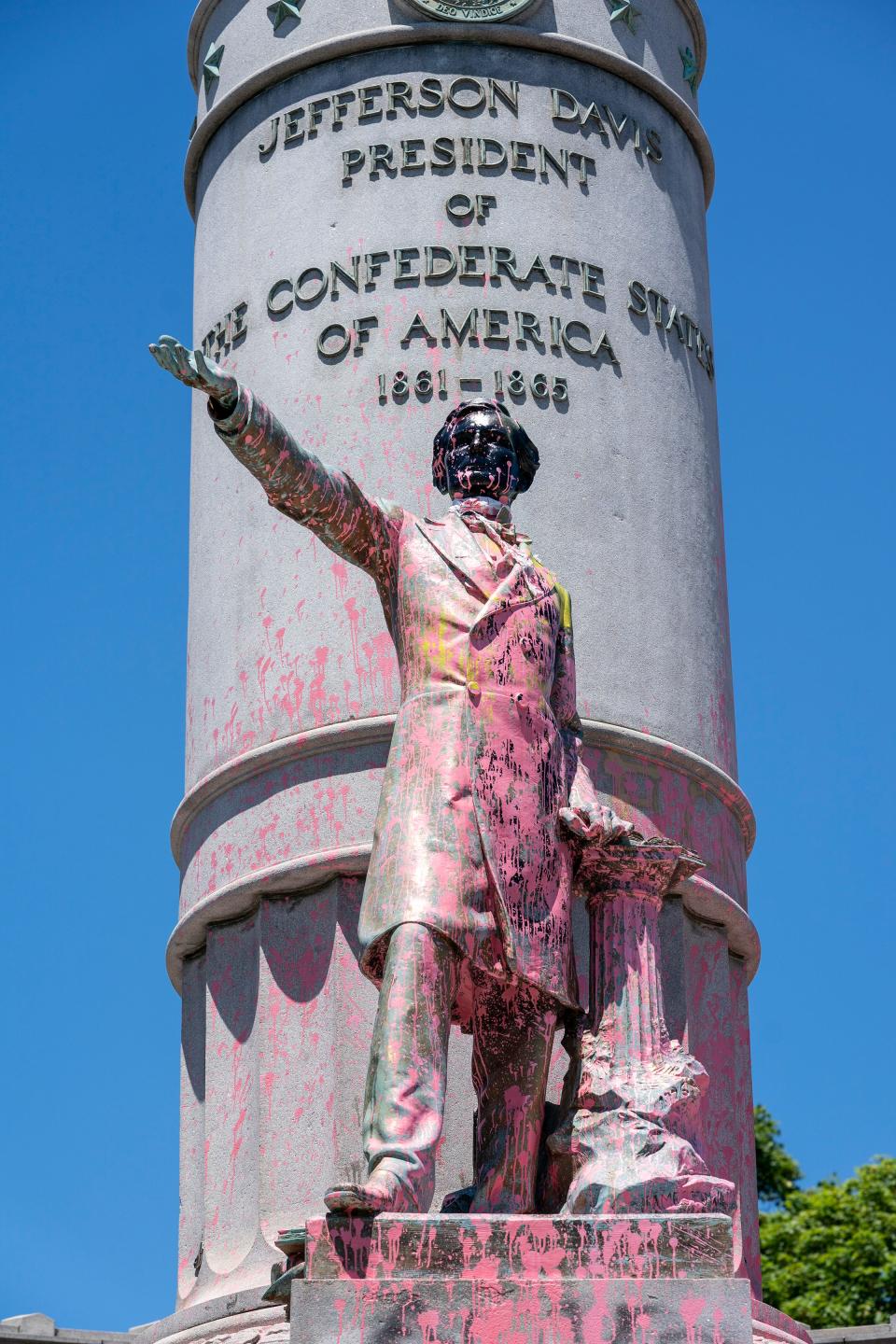
Much of that reckoning has been focused on the American South, where Downs, of UC-Davis, said many Civil War monuments were erected from the 1880s to the 1920s as the South recovered from the war and looked to reintegrate itself into the national narrative. Advanced by white Southern politicians, they doubled down on efforts to push segregation and disenfranchisement of Black voters, Downs said.
“It’s not just that they show white guys but that they show a specific version of history that was contested, including by other Southern white people,” he said. “They were produced out of that financial and political context.”
Throughout the South, Confederate heroes became memorialized not just in statues but in street names, schools, parks and municipal buildings. Karen Cox, a professor of history at the University of North Carolina, Charlotte who also is not affiliated with the project, said that in some places, efforts to counter the narrative are complicated by local laws prohibiting removal, or even less-visible placement, of such monuments.
In such cases, she wonders, what does a counter-monument look like?
“I’ve spoken to these communities, and they run up against a brick wall,” Cox said. “It can’t be a 4-by-6 panel, because the 30-foot monument still dominates. Communities have to be creative.”
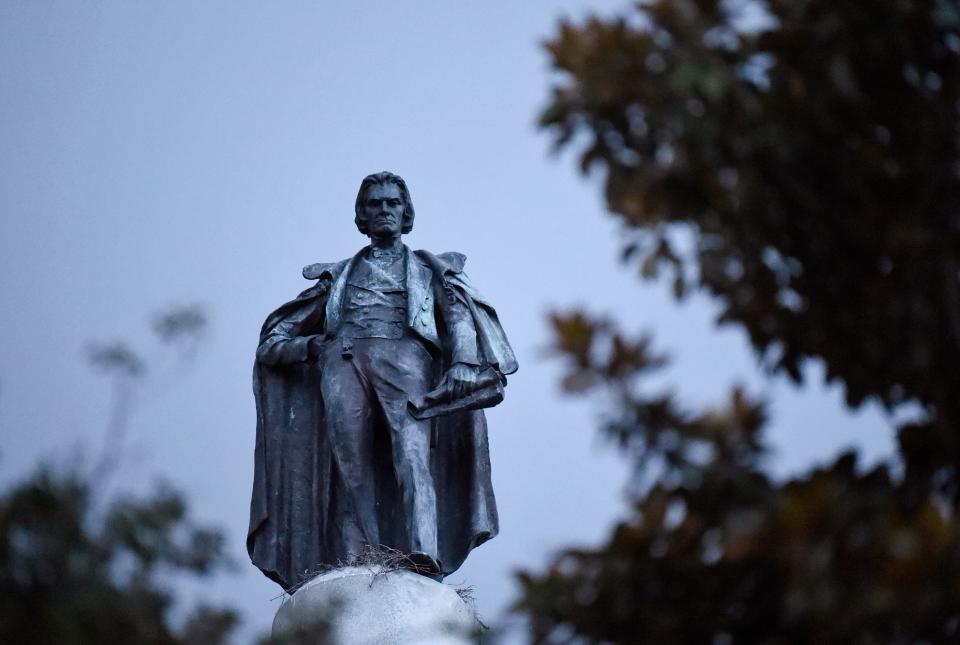
Even when removal is possible, Downs said, correcting the narrative isn’t just about taking the monuments away; it’s about figuring out how to effectively replace them.
“It’s not just taking down the past but figuring out how to do better history in the present.”
This article originally appeared on USA TODAY: US monuments tell a narrow story. A $500M pledge could change that.

